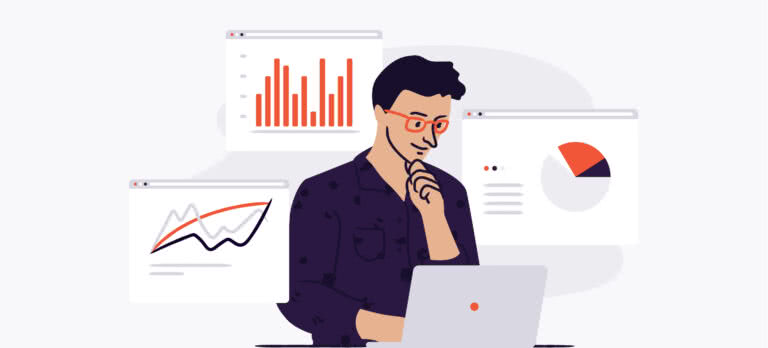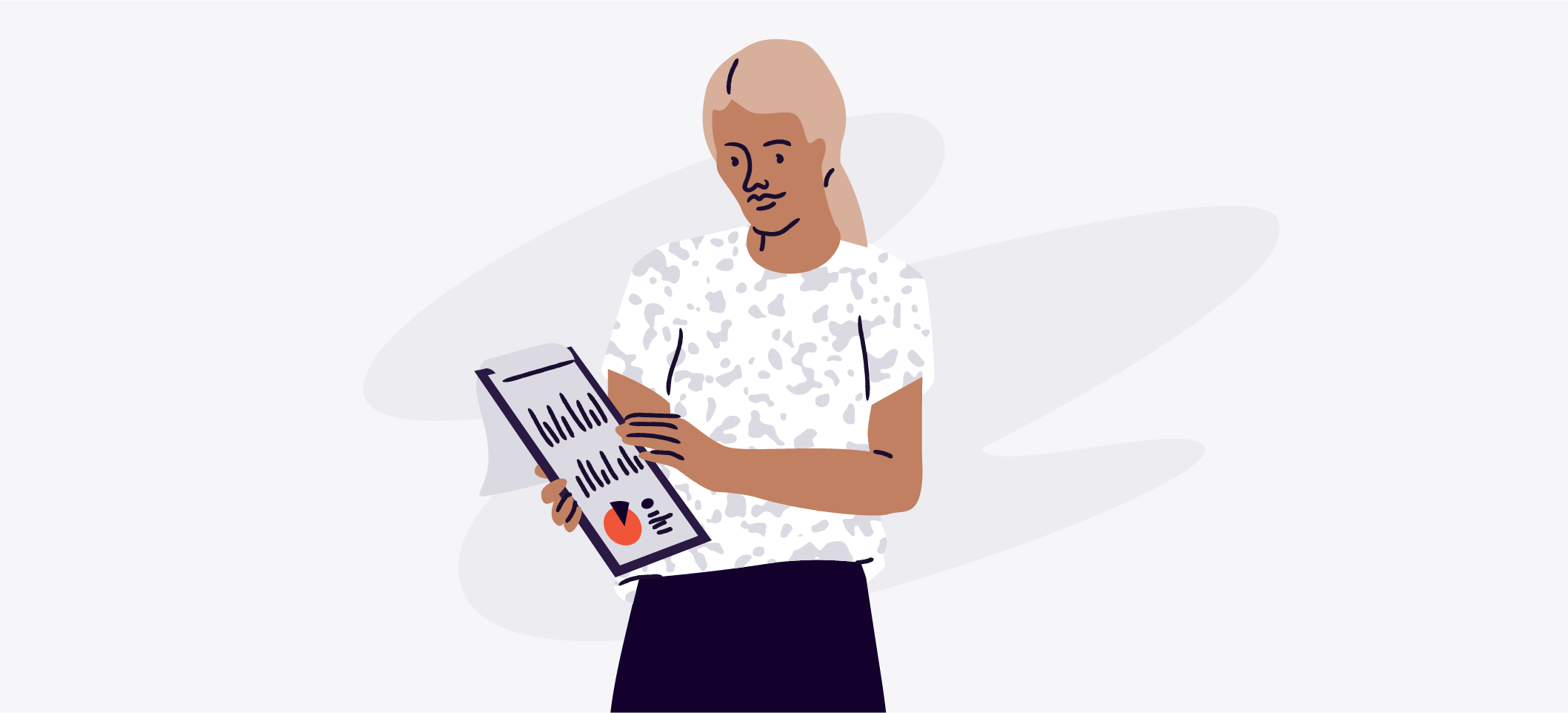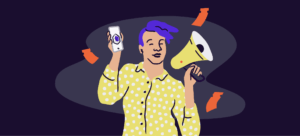Finding and building audiences on Facebook and Instagram is the key to successful event marketing. Eventbrite’s marketing tools make it easy to target the right people. With the right audience targeting, you’ll see more registrations, more ticket purchases, and more engagement. Plus, creators who used our marketings tools saw 2.5x more listing views*. Time to expand your reach!
Chapter 1: What are your Facebook and Instagram audiences?
What is your Facebook audience? Your Instagram audience? How do you reach those audiences?
Your Facebook audience and your Instagram audience are important parts of your marketing. Targeting your audience simply means placing the right message in front of the right audience at the right time. Knowing how to target an audience on Facebook (or Instagram) may be the most important part of your digital marketing strategy.
Imagine you play roulette. The wheel is spinning; the dealer asks you to bet. What gives you the best odds of winning? Would you spread your chips across multiple colors or go all in on black? It’s risky — or foolish — to pin your chances of winning on one pool.
The same is true with audience targeting. By targeting widely, you maximize ad reach. The greater the reach, the greater the audiences, the more potential buyers.
Think of working with a single audience as putting your entire bet on black at the roulette wheel. Unreached audiences represent huge missed opportunities. Every distinct audience is another bet. Get your ads seen by a range of audiences and creators will net a higher return on ad spend.
How do you start targeting audiences? If you run your ads through Eventbrite, our platform automatically recommends audiences for your campaign. It also pinpoints new audiences, similar to your existing customers, using data sources such as your website traffic, Eventbrite, Spotify, etc.
Takeaway: Eventbrite marketing tools help you think big when it comes to reaching your audiences. Lookalike Audiences and Core Audiences are great for prospecting and finding new potential customers.
Audience discovery
If you’re just beginning your Facebook advertising journey, set aside a budget for audience discovery. In other words, prospecting. Think of your ideal audience as the bull’s eye in a game of darts. If you threw just one dart, what would be the odds of hitting the bullseye? Much lower than if you threw one hundred darts.
In the world of Facebook advertising, those darts seem expensive if you’re not focused on the long-game. Take prospecting into account when you create your advertising budget to leave you room for exploration. In other words, buy yourself a bigger pack of darts.
Takeaway: Lookalike Audiences and Core Audiences are great for prospecting and finding new potential customers.
Retargeting your audience
When your first ad campaign is underway, plan on doing as much work as you can to transition your audiences from “cold” to “hot.” “Hot” leads are audiences that have already demonstrated interest in your brand. Interest can take several forms:
- Cold: People who view products on your website
- Warm: Subscribing to your mailing list and/or following you on social media
- Hot: People who have purchased your product in the past
The longer you advertise, the more people will express their interest in your brand. As these people go from “cold” to “hot,” they become less expensive to advertise to.
Takeaway: Custom Audiences are great for retargeting people already interested in your business.
Chapter 2: Best practices for Facebook audiences
Knowing a few best practices for Facebook ads will help you better reach your audience. Say you host online poetry writing workshops. Your audience targeting might take these forms:
- Interest-based targeting: Audiences who are interested in poetry, creative writing, storytelling, creativity, and literature all would fit the bill.
- Custom Audiences: Traffic from your own website or your ticketing company, if you have your Facebook pixel; individuals who’ve watched more than three seconds of video you’ve uploaded to Facebook or Instagram; your Instagram followers/engagers, or followers/engagers of Instagram accounts to which you have page advertiser access; and individuals who directly liked or engaged with your page or events, if you utilize Facebook Events.
- Lookalike Audiences: Audiences who are similar to your interest-based audience
- Prospecting: Audiences comprising new consumers that haven’t engaged with your brand on social media or your website.
- Remarketing: Audiences you’ve advertised to in the past.
The most common type of audience or targeting on Facebook is interest-based targeting. Most event marketers are familiar with this. You probably use interest-based targeting when you create campaigns: If you press ‘Boost’ on your Facebook page and input a handful of interests, that’s interest-based targeting. If you use Facebook’s guided campaign creation interface or edit a live ad set, interest-based targeting prompts you to add demographics, interests, or behaviors. Those interests — i.e., an artist, a brand, a celebrity — impact the number of individuals that you’re reaching.
Why you need multiple audiences with Facebook ads
While interest-based targeting is a great way to reach audiences that may be new to your brand, to truly maximize returns on a fixed ad budget, you need to go beyond interest-based targeting.
To do this in Ads Manager, go to the section called Audiences. Click on the top left corner of your Ads Manager user interface and look for ‘Audiences.’ Within this section, press the button that says ‘Create Audience.’ From there, you can create two types of audiences:
- Custom Audience: You give Facebook your customer list (i.e., mailing list, engagement-based list for a page that you have access to) and Facebook enables you to target those individuals directly.
- Lookalike Audience: You give your customer list to Facebook and Facebook finds new people whose interests/demographics resemble those of the people on the customer list.
There’s more to targeting than interest-based audiences. The highest return on ad spend is what we’re after, which is why we recommend using multiple audiences on Facebook.
Budget Tip: Include as many audiences as you can based on your campaign’s budget and duration. Need help figuring out how many audiences to give your budget? A quick formula is:
Total Budget ÷ Duration of Campaign ÷ $7 Per Audience Per Day = Number of Audiences to Target
Chapter 3: The most profitable audiences
The best audience for Facebook doesn’t need to be an elusive thing. So why do most event creators only utilize one ad set? When you do quick campaign creation in Facebook Ads Manager, you’re defaulted to a screen that prompts you to add interests.
If you’re a comedy venue in Canada and Facebook asks you to enter interests that you think would be relevant for your shows, you’ll default to what you know: Dave Chappelle, Comedy Central, etc. Facebook makes it easy for event organizers to use interest-based targeting. And while this isn’t an incorrect way to target, it has limitations: usually, this targeting only results in one interest-based audience.
What is a custom audience?
The most profitable audiences are custom audiences. Custom audiences comprise a unique-to-you set of populations, from people who visit your website to folks who check out your Facebook Events.
Everything flows from custom audiences. When you press that ‘Custom Audience’ button, a variety of different custom audiences become available to you. They’re all based on different data sources. In the events industry, the most popular audiences are (from most to least profitable):
- Web Traffic: Individuals who visit your event website or your ticketing pages (i.e., Eventbrite or Ticketmaster).
- Facebook Events Engagers: Individuals who visit your Facebook event pages and RSVP and ‘Going’ or ‘Interested.’
- Customer List: Your mailing list. Oddly, past buyers and people on your mailing list tend not to be repeat event goers.
- Interest Audiences: The true workhorse of Facebook advertising. If you don’t have the previous three data sources, this is your best shot of getting in front of new people.
- Facebook Page Engagers: Individuals who’ve liked your Facebook page or engaged with it (i.e., visited your page, commented or liked your posts).
- Instagram Engagers: Individuals who’ve liked your Instagram account or engaged with it (i.e., commented or liked your posts).
Say you wanted to create a custom audience of anyone who responded going to or interested in a particular Facebook page. When you select the ‘Going’ or ‘Interested’ button, that Facebook page appears. From there, you could create a custom audience to advertise to those individuals directly. You can also create an audience based on any mailing list. Simply click ‘Choose a File’ and upload the mailing list.
How do I make different audiences?
To create different audiences, go to the All Audiences section in Facebook Ads Manager. Given how crowded Ads Manager real estate is, many marketers aren’t even aware of this option. Too often, people stop only building out a custom audience of past buyers or mailing lists contacts. The audiences we see leveraged the least are, oddly enough, the most profitable: Website traffic, Facebook page, Instagram profile, and Facebook events engagement audiences are all underutilized.
What is a Facebook lookalike audience?
Another common Facebook audience is a lookalike audience. This is pretty self-explanatory. If you host pie-making events, a lookalike audience may be people who’ve RSVP’d to cake-decorating classes.
Once you’ve created any of these custom audiences, you can also create a lookalike audience. If you’re a cheese festival trying to reach new people in your market, you could take a custom audience — say, web traffic — and give it to Facebook to help you find new people. Simply click the box that says ‘All website visitors’ and click on these three dots to see ‘Create Lookalikes.’ Those three dots enables Facebook to create a lookalike audience that sources new individuals based on the custom audience source.
What is a Facebook retargeting audience?
You’ll also want to utilize Facebook retargeting audiences. A retargeting audience is an audience consisting of people who’ve already engaged with your events. Maybe they’ve viewed your events; maybe they’ve visited your website. They’re not unfamiliar with your brand, but they’re also regular attendees.
By using custom audiences, with lookalikes and strategic audience retargeting, you’ll see significantly better returns on your campaigns.
Takeaway: Any audience can be valuable. But with a lean budget and tough choices to make, prioritize. Include different types of audiences in your campaigns — not just interest-based audiences.
Chapter 4: Eventbrite’s Audience Builder tool: Made for Facebook events
In social advertising, not all audiences are created equal. Data from one source may be of higher quality and lead to more conversions than data from another. Combining data from multiple sources may lead to better results than one source alone. The Audience Builder takes this into account and helps design audiences based on what it can learn from the data you have from multiple sources.
Information about the people who care about your product or brand already exists all over the internet. Our Audience Builder starts with the available data from platforms and tools you use everyday, allowing you to unify the knowledge you‘ve accumulated about your customers when building the best target audiences for your marketing campaigns.
The Audience Builder uses data about the people who have engaged with your brand on:
- Eventbrite
- Stellar
- Spotify
- Patreon
- Mailchimp
- Your website
Why use Eventbrite’s Audience Builder
The Eventbrite Audience Builder allows you to create a wide set of audiences that can be tuned to your liking. These sets are the ingredients in the recipes for pre-built audiences that you can generate immediately.
It also saves you time. Rather than spending countless hours trying to hack ads platforms, the Audience Builder helps you build the best audiences easily, letting you get back to creating events fast.
Most importantly, Audience Builder automates your social marketing. We take the guesswork out of audience targeting. Major marketing success has never been easier.
*Eventbrite data 5/1/2022 – 12/1/2022 comparing events promoted with Eventbrite marketing tools with any event that was not promoted with the same tool.





